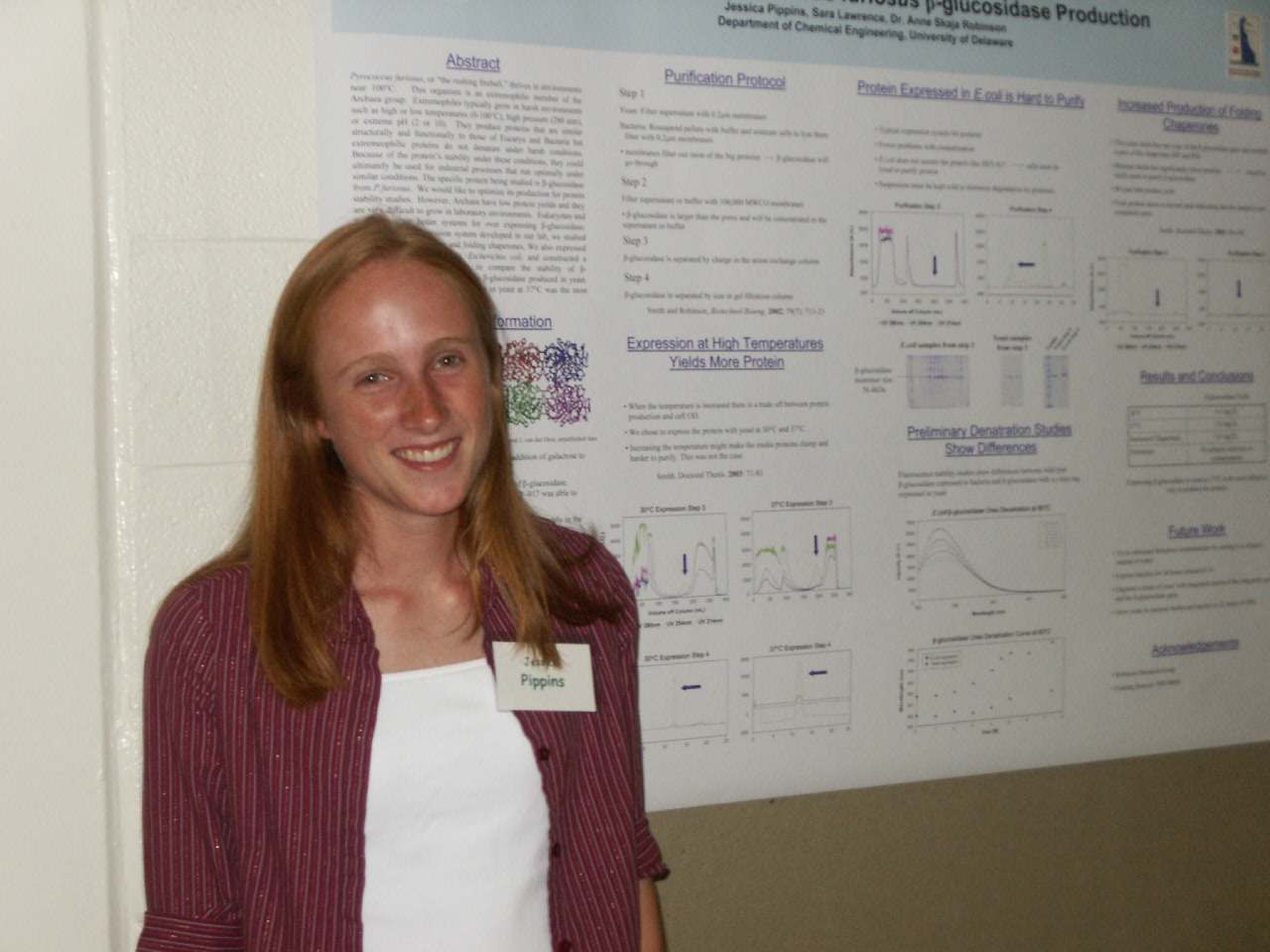Amanda Barker1,
Jason M. Winget2,
and Clifford R. Robinson1,2,3
1Department of Chemical
Engineering, 2Department
of Chemistry and Biochemistry,
and 3The
Delaware Biotechnology Institute
Approximately 60% of drugs on the market today target members of the G protein-coupled receptor family. GPCRs are a family of proteins that mediate signaling events in cells throughout the body. These proteins are characterized by seven hydrophobic transmembrane helices connected by alternating intra- and extracellular loops. Standard structure determination techniques cannot be easily applied to GPCRs, due to the hydrophobic nature of the transmembrane regions. Determination of the three-dimensional structure of GPCR ligand recognition sites would result in more effective drug design. Our goal is to use computational methods to generate models for GPCR ligand binding pockets, and to use protein engineering to produce variants of the receptors corresponding to these models. Computational three-dimensional representations of two GPCRs, the Neurokinin 1 and 2 receptors, were utilized to generate models of the proteins’ ligand binding pockets. It was determined that the majority of contact points with the ligand occurred along the extracellular loops of the GPCRs, which is in accordance with previous experimental evidence. These models will assist in the generation of water-soluble GPCR homologues. We will use genetic engineering to produce these homologues and purify them for structural and ligand binding studies. Their low hydrophobicity will make them more tractable targets for structural studies and high-throughput drug screening.
